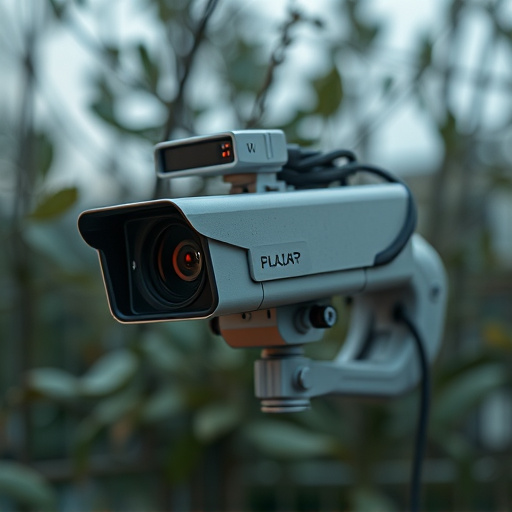Dummy Surveillance Deterrent Positioning Guides strategically place realistic decoy cameras to deter crime, enhancing security without significant investment. By blending with surroundings and positioning at blind spots & high-risk areas, these guides offer cost-effective protection while maintaining aesthetic harmony.
“In the realm of security, dummy surveillance cameras serve as a powerful deterrent. This article provides an in-depth guide on creating realistic camera shell designs to bolster your property’s safety. From understanding the fundamental concept of dummy cameras to exploring key design factors and strategic deterrent positioning, we cover it all. Learn how environmental considerations can enhance authenticity while avoiding common pitfalls. Discover the secrets to implementing an effective Dummy Surveillance Deterrent Positioning Guide for maximum security.”
- Understanding Dummy Cameras: The Basic Concept
- Key Factors in Realistic Shell Design
- Deterrent Placement Strategies for Optimal Effectiveness
- Environmental Considerations for Authentic Look
- Avoiding Common Pitfalls: Tips for Successful Implementation
Understanding Dummy Cameras: The Basic Concept
Dummy surveillance cameras, often referred to as decoy or fake security cameras, are an innovative deterrent solution in the realm of security and surveillance. The basic concept behind these devices is straightforward yet effective. By strategically positioning realistic-looking dummy cameras around a property or public space, potential intruders are led to believe that their actions are being closely monitored. This simple visual cue can significantly deter criminal activity.
When it comes to dummy camera positioning, a well-planned guide should be followed. The guide typically involves placing the decoy cameras in prominent, easily visible locations. Windows, doorways, and intersections within a surveillance zone are ideal positions. Additionally, incorporating various angles and heights ensures a comprehensive deterrent effect. Such Dummy Surveillance Deterrent Positioning Guides are invaluable resources for enhancing security without breaking the bank.
Key Factors in Realistic Shell Design
In designing a realistic security camera shell, several key factors must be considered. Firstly, dummy surveillance deterrents play a crucial role in fooling potential intruders. These can include mimic cameras, false antennae, and other accessories that resemble genuine security equipment but serve no actual monitoring function. Positioning these deterrents strategically around the target area helps create an appearance of 24/7 surveillance, significantly raising the barrier to entry for would-be thieves or vandals.
Additionally, the deterrent positioning guide should prioritize aesthetic integration while ensuring optimal visibility. The shell design should blend seamlessly with the surrounding environment, whether it’s a commercial building, residential neighborhood, or industrial site. This involves selecting materials and colors that match the local landscape, avoiding stark contrasts or obvious signs of surveillance. A well-designed shell not only discourages criminal activity but also maintains the aesthetic appeal of the location.
Deterrent Placement Strategies for Optimal Effectiveness
Placing dummy surveillance deterrents strategically is key to enhancing security measures and creating a sense of vigilance. A well-designed guide, like a Dummy Surveillance Deterrent Positioning Guide, should consider both physical layout and psychological impact. For instance, positioning these deterrents at blind spots, entry points, and high-risk areas can act as a powerful visual reminder of surveillance, discouraging potential intruders.
The guide should also emphasize the importance of variability in placement. Randomly dispersing dummy cameras around the perimeter, rooftops, and strategic interior locations reduces predictability, making it harder for criminals to adapt their tactics. This combination of physical presence and psychological strategy can significantly deter crime, offering a cost-effective way to enhance overall security without relying solely on active surveillance systems.
Environmental Considerations for Authentic Look
When designing a realistic security camera shell, environmental considerations are crucial for achieving an authentic look. The surroundings and context in which the camera is placed play a significant role in its overall realism. Factors like weather resistance, material choices, and color matching ensure that the dummy surveillance deterrent blends seamlessly into various environments, from urban landscapes to industrial sites.
For instance, using materials that mimic real camera textures and finishes, such as polycarbonate or high-quality plastic, can make the shell appear genuine. Additionally, incorporating features like rust-resistant coatings for metal components and water-tight seals enhances durability, making the dummy surveillance deterrent suitable for outdoor positioning according to a comprehensive Dummy Surveillance Deterrent Positioning Guide. This attention to detail contributes to a more convincing visual representation, serving as an effective deterrent against potential tampering or theft.
Avoiding Common Pitfalls: Tips for Successful Implementation
Avoiding common pitfalls is key to successfully implementing security cameras as a deterrent. One major error is treating them as mere tools for surveillance, ignoring their role in crime prevention. Cameras should be strategically positioned according to a Dummy Surveillance Deterrent Positioning Guide, emphasizing high-risk areas and visible locations. Discreet placement is crucial; mounting cameras in plain sight acts as a powerful psychological deterrent. However, excessive coverage or an irregular layout can create an eerie atmosphere, potentially scaring away customers or employees.
Another pitfall is relying solely on the visual presence of cameras. While they serve as a strong visual cue, effective deterrence also requires a well-designed system integrated with robust security protocols. Regular maintenance and testing are essential to ensure optimal performance. Additionally, keeping up with technology ensures your security measures remain current and efficient. Combining these practices with the right positioning will significantly enhance overall security without appearing overly invasive.
In conclusion, a well-designed realistic security camera shell can significantly enhance surveillance deterrence. By understanding dummy cameras, considering key factors in shell design, strategically placing deterrents, and accounting for environmental aspects, you can create an authentic appearance that discourages potential criminals. This Dummy Surveillance Deterrent Positioning Guide offers valuable insights to ensure your security measures are both effective and discreet.
